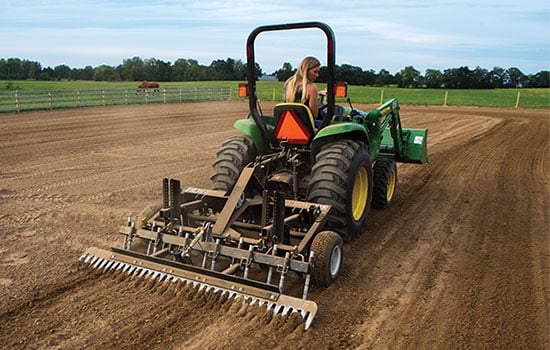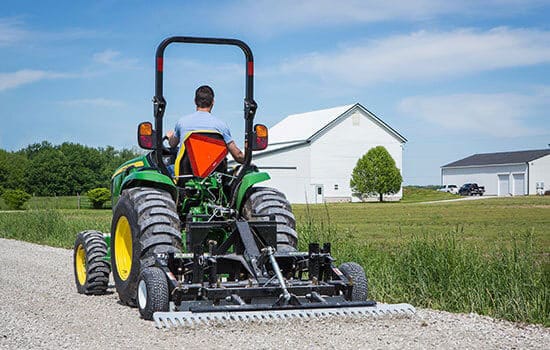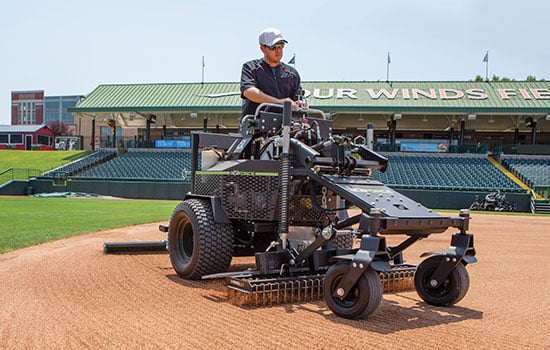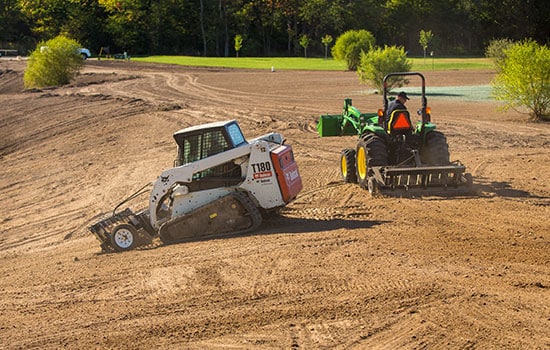Manure Spreading 101 – Three Features that Get the Job Done – ABI Dirt
Not all manure spreaders are created equal. A carefully engineered and built piece of equipment can make all the difference. In this episode we take a look at three features that set ABI Manure Spreaders apart and make them unique.
ABI Products Shown In This Video

25ft³ Compact Ground Driven Manure Spreader
- 4-Speed - Ground Driven
- For Lawn Tractor, ATV, UTV, Golf Cart, or Sub-Compact Tractor - Up to 4 Horses
- Starting At: $116/mo.*

85 ft³ GD – Mid-Sized Manure Spreader
- 4-Speed - Ground Driven
- Min Tractor HP: 25+ HP - Up to 15 Horses
- Starting At: $229/mo.*

50 ft³ PTO – Compact Manure Spreader
- 4-Speed - PTO Driven
- Min Tractor HP: 22+ HP - Up to 8 Horses
- Starting At: $161/mo.*

85 ft³ PTO – Mid-Sized Manure Spreader
- 4-Speed - PTO Driven
- Min Tractor HP: 25+ HP - Up to 15 Horses
- Starting At: $240/mo.*

125 ft³ PTO – Large Manure Spreader
- 4-Speed - PTO Driven
- Min Tractor HP: 35+ HP - Up to 22 Horses
- Starting At: $286/mo.*

185 ft³ PTO / Hyd – Largest Manure Spreader
- Variable-Speed - PTO/Hydraulic Driven
- Min Tractor HP: 50+ HP - Up to 35 Horses
- Starting At: $376/mo.*
Transcript
Hi, everyone, Matt here with ABI Attachments. Thanks for joining us again here on the ABI Dirt. In last week’s episode, we took a look at some basic 101 principles to manure management. We were talking specifically to those of you who either wanted a refresher on how to take care of the manure on your property, or for those of you who are new to having manure on your property and needing to take care of it. This week we wanna follow up on that episode and talk about manure management. But instead of talking big picture what you’re dealing with, we wanna take a look at one of our compact manure spreaders and take a look at some of the design components there. Because we’ve designed these spreaders specifically to tackle the issues that you’re facing. We’re not just trying to get poop out of the stalls. We’re trying to actually turn that manure into something that’s useful for you on your property. So let’s take a look.
Here we are with our 50 cubic foot ground drive spreader. And sorry it’s a little bit dusty, because we are getting these things crated up as fast as we can. So for those of you waiting on, waiting on your unit, we’re getting this back on the skid and out the door as quickly as we can. Wanted to point out a couple of features on this unit. Again, this is our ground drive unit. We have PTO available as well. That help to address some of the issues that we just voiced. The first one I wanna point to is this inline shredder bar. A lot of the manure spreaders on the market, maybe a lot that you’ve seen as you’ve been looking for manure spreaders. Maybe the unit on your property? The old one that you’ve been using for years, or you know that your uncle’s been using for years? Those that are rusty and you’ve seen around.
They have widespread paddles, like ours do out the back end. Some kind of device that helps fan out the manure and get it spread out the back end. But not every unit as this inline shredder bar. But here at ABI, we believe in the value of manure. Without an inline shredder bar to dice up and shred up the manure before it gets spread up the back end you could have some pretty sizeable clods of manure, especially depending on how dry or moist it is, depending on what kind of animals you have on your property. In order to turn manure into that brown gold that I keep referencing, to actually get the nutrients into the soil and use manure as fertilizer, you’ve got to have those particles of manure shredded up as finely as possible. That’s why this shredder bar comes standard on all of our spreader models, on all of our sizes, no matter what. You can’t buy an ABI classic spreader without it. You’ve got to shred your manure before you spread it. That’s how you get nutrients into the soil. This is one way that you can help take care of those pastures and keep the flies down around your property.
The second design feature I wanna point out on this spreader is actually an option. It’s one of two options on these ground drive spreaders. But if you’re talking to one of our factory reps please don’t walk out the door without one of these things. This Fines Pan, also called a Litter Pan, sits a little underneath and a little bit behind this poly floor on this spreader. And as you’re spreading manure, if there’s any fines, little particles that have already been shredded up, or maybe there are already small particles coming out of the stalls, rather than just falling out the back end of that back into the spreader and just leaving… Well it’s a brown waterfall, it’s a boot fall, as it falls across the ground. It just leaves a thick, heavy coverage on your pasture.
Those fines get caught up in this pan so that these widespread paddles can grab it and flip it out the back end. That prevents such thick, heavy coverage. And again, if you’re thinking pasture health, you want that spread to be as big as possible. You want this rooster tail of poop flying out the back end of the spreader. And that’s only accomplished if you’ve got this fines pan. This little pan out the back end, to really maximize the spread action of these paddles.
The last design feature I’m gonna point out for you today is this front end. We have got variable speed control on all of our ground drive units. And the reason this is significant for you if you’re again, new to property management, and new to having animals around the property that you’ve gotta get rid of manure. Manure comes in all shapes and sizes. And depending on what your bedding is, depending on on what animals you have, depending on the season. Depending on the rainfall in your area. Depending if you’ve let your manure compost or not before spreading, there’s a lot of factors that go into how heavy, how wet, how dense, the manure is that you’re working with and trying to spread out. That’s why we opt not only to have an on/off on this ground drive spreader, of whether or not the shredder and spreader paddles are engaged. But we also have a four-speed varietal control apron chain, or web chain, that pushes that manure to the rear end.
That means that depending on how fast you like to drive on your tow vehicle, and how dense or heavy your manure is, you can control the rate at which that manure is being pushed to the back, so you can control how good your spread is. Again, if you’re in a hurry, you’re trying to dump. If you’ve got an air to the property that you’re just trying to get the manure down, all right, you can crack up the speed a little bit. But if you have a smaller pasture or a smaller property and you’re really trying to maximize the impact of using that manure in such a way that keeps your pasture healthy, well then, you can dial back the speed a little bit. You can fine-tune the control so that you can get the right where you want it. You can spread it as fast or as slow as you want, so you can get the spread that you want.
That’s all I’ve got for today, everyone. Remember, if you want more content like this I’m gonna be talking about manure spreaders here for the next couple of weeks. Actually intermittent, because it’s the time. It’s the season when we’re all trying to get that manure pile out the way. If you’ve been under a frozen tundra for the past couple of months, then you’re looking at that manure pile and you’re ready to get it gone. Make sure to subscribe, Like this video, but also subscribe to the channel. That way you can keep in touch with us. If you have any questions about the manure spreaders, leave a comment in the comment section below, or just give us a call. We’d be happy to talk with you about what you you’ve got going on in your property, as well as if you’ve got a current spreader. Is it working? Is it not working? How can we help? We’d love to hear from you. We’d love to work with you. See you next time, everyone.



